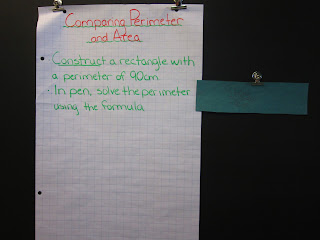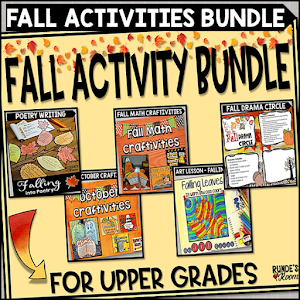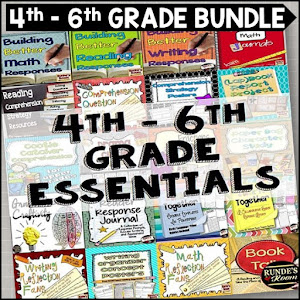Anyhow, before I tackle the mess I call home, I've got a fun math activity to share for math journal Sundays. Actually, my post will cover the whole math lesson, but the lesson ended in a fun little foldable.
We've been studying the relationship between perimeter and area, and I thought it was time to go a little more hands on. I handed out medium-sized sheets of construction paper, and we got started.
I asked each student to construct (we talked about using a ruler and a protractor to be precise) a rectangle with a perimeter of 90 cm. When all students had done this, I posted one of them on the blackboard.
I didn't tell them what dimensions to use because I wanted to have a variety of shapes.
They then had to use the formula to solve the perimeter (on the front of the rectangle), and area (on the back of the rectangle).
I then went around the room, and we discussed the different areas of the rectangles. We then posted them on the board (smaller areas on the one side, and larger areas on the other side). And voila! The students had a strong visual reference as to what shapes of rectangles have the smallest and largest areas, as all rectangles had the same perimeter.
The students came up with the "big idea", which we wrote on the bottom of the chart paper - "When the rectangles have the same perimeter, the closer the shape is to a square, the greater the area".
But that's not all. I wanted to move on to the area of a triangle, so I had the students get their rectangles off the blackboard, and draw a diagonal on them. They then cut down the diagonal to make two triangles the same size. When I asked them what the area of their triangle was, they knew immediately that the area was half of what the rectangle was. Using one of the triangles, they then solved the area, using the formula. I had so many students tell me how easy this was, I had to pass around my Easy button for them all to press. (LOVE it)
We finished off the lesson with a great little foldable for our math journals. I had them cut out a square, and fold it in half into a triangle. They glued this into their journals, and solved for the area of the triangle and the rectangle (square).
 |
You know those rare occasions when you just KNOW the lesson went absolutely perfectly - well, this was one of those times. I was so happy with the final results, and I KNOW all my students were engaged and learning. Just look at the distribution of sticky note exit slips on our learning goals at the end of the day ... I think they liked the lesson. ;)
Happy, Happy Sunday!!!


































I LOVE your blog! I'm new to the blogging world and it's my favorite I've found so far! I love that you get to the point about the lesson and have lots of pictures of what you did, so you're the first button I'm adding to my blog! We totally have similar blogging styles. :)
ReplyDeleteYou should check out my area, perimeter, and volume song that I posted under my math section last week.
http://schenkgr4.blogspot.com/search/label/Math
If you decide to subscribe to my blog, I'll shoot the MP3 your way for free! :) Thanks for all of your awesome posts!
I'm starting area and perimeter this week, so this is PERFECT! Thanks for all of your wonderful tips.
ReplyDeleteElizabeth
Fun in Room 4B
Thanks, ladies. Elizabeth, I'm glad the timing works out - isn't it great when that happens!
ReplyDeleteMrs. Schenkelberg, I'm heading over to check out your blog. Thanks!
This is awesome! I love that the kids can then move onto the area of a triangle! Thanks so much for sharing this awesome lesson!
ReplyDeleteHilary
Rockin' Teacher Materials
I wish I hadn't just finished this unit!!!!
ReplyDeleteI love it and can't wait to use it!
ReplyDeleteI love all your math lessons. I wish I'd had someone like YOU in Grades 5 and 6 :))
ReplyDeleteHappy Valentine's Day!
❀Barbara❀
Grade ONEderful
This is great, exactly what I need right now! Thanks to Hilary I just found your blog and now follow you!
ReplyDelete✿ Kaleigh's Klassroom
I am so happy I stumbled on to your blog. I teach at an International School and we use the IB curriculum. Within the PYP program it is very important that we let the students "figure it out for themselves". This can be a real challenge in Math. This was an amazing example of exactly that! Bravo.
ReplyDeletePam
Thank-you so much, Miss Pam. I agree - the concepts that students figure out for themselves are the ones that stick with them.
DeleteLove this idea. I'm wondering what the post-its on the math, exit learning is about. Do they post it on their favorite of the day?
ReplyDeletekkmama,
DeleteThe post-its are like a summary of learning for the day. At the end of the day they have to write about one new thing they learned during the day. In this lesson, most of the students wrote that they learned the formula for the area of a triangle, or that the area of a triangle can be found by dividing the area of the rectangle in half, etc. Thank-you for your comment!
This lesson was Amazing!!!! Thank you for sharing. I did it today in my class. Not only did I enjoy teaching it but my students loved it and learned the concept more concretely!
ReplyDeleteThanks for nice idea.I will try teaching this to my students.Please tell me how interesting can we teach this to my students The area of a rectangular plot is 528 m2. The length of the plot (in metres) is one more than twice its breadth. We need to find the length and breadth of the plot. http://youtu.be/0Ze64kZ6z6U
ReplyDeleteI love this idea! In fact I love your entire blog. I have been using Pinterest to find great teaching ideas. I click on the pins to go to the originating site of all of the ideas I want to use immediately. Lately all of those clicks have been leading to your blog! You have such fabulous ideas. You mentioned your Exit Slip strategy at the end of this post. Do you have a post to describe exactly what you do? Also, I have been trying to look at all of your Math posts, but it will only show me on page worth, it won't let me look at "Older Posts"
ReplyDelete